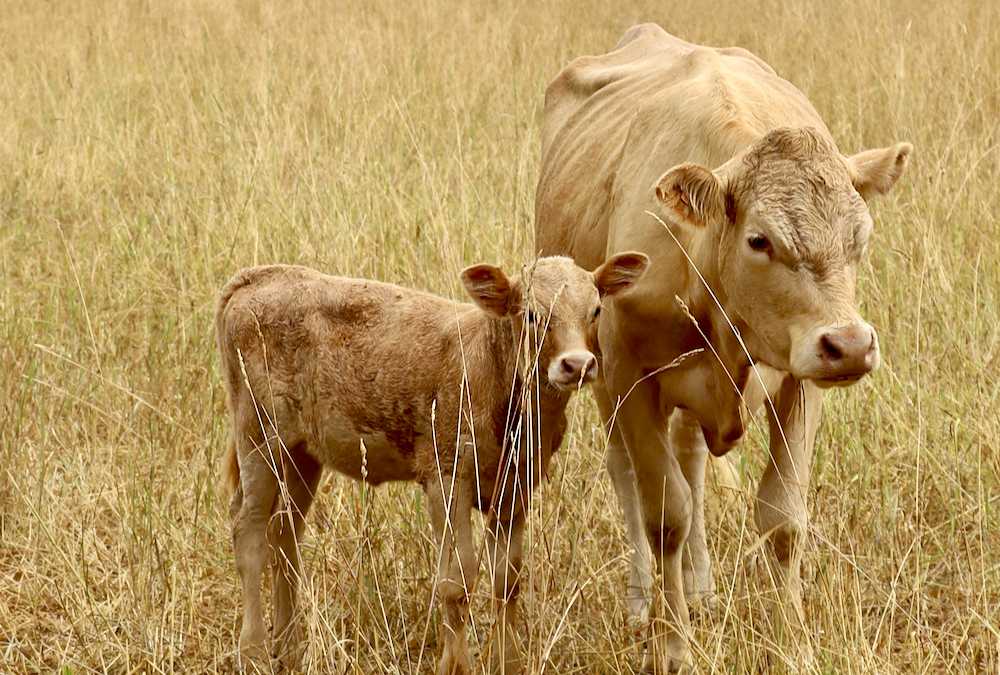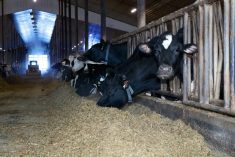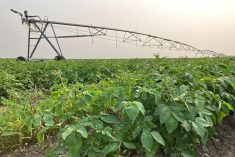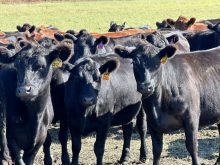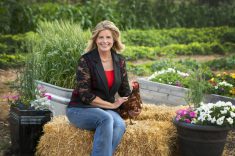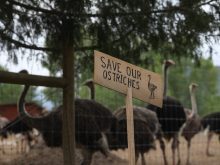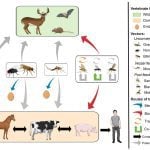Battered by volatile markets and disastrous weather over the past year, cattle producers in Alberta say they need much better livestock insurance programs.
“To tell you the truth, we opted out of them a few years ago because they didn’t work for us,” said Alberta Beef Producers chair Melanie Wowk, who farms near Beauvallon.
“The premiums have got too high and the payouts just haven’t been there. It’s just another risk for us to pay those high premiums for something that doesn’t work.”
Wowk isn’t alone. Enrolment numbers for livestock price insurance programs have been declining over the past decade, with fewer than half of Alberta’s cattle producers enrolling today.
“The No. 1 roadblock to it is the cost of the premiums,” said Wowk. “When we looked at them this year, the premiums were at the same level that they were when COVID hit and they weren’t sure what was going to happen with the markets.

“We can’t afford to pay those premiums. We can’t afford to put that money out. It’s just another loss in income for us unless the markets go down the drain completely.”
That hasn’t been the case in the last few years, she added.
“Our calf prices haven’t changed a whole lot in the last few years, other than going down from their high in 2015 or 2016.”
The high cost of the insurance premiums just can’t be justified for many operations, said Brady Stadnicki, manager of policy and programs for the Canadian Cattlemen’s Association.
“It’s a great program, but when that premium might be cutting significantly into the tight margins in the beef industry, it’s a bit more challenging to make the decision to buy it,” he said. “We are hearing that is a concern more and more from producers, and that contributes to us seeing some stagnant levels of uptake over the last couple of years in all regions that it’s offered.”
Read Also
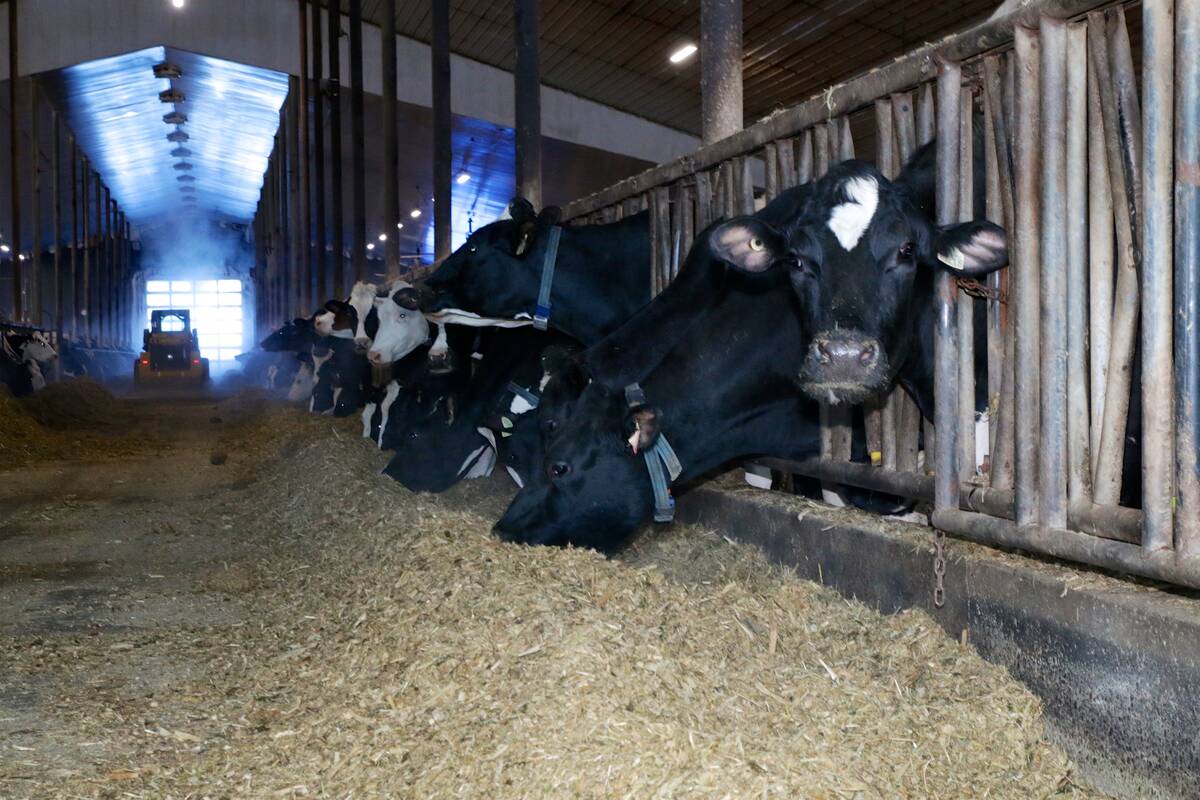
Milk concentration plant officially opens in Alta.
Canadian raw-milk processing history made with start up of Dairy Innovation West milk concentration plant in Alberta
In Western Canada, the livestock price insurance program is fully funded by producer premiums. That’s not the case for crop insurance (though forage and pasture insurance is subsidized by the government).
“We look across the way at our crop producers, and their program seems to work quite well,” said Wowk. “They’ve got an 80 per cent uptake on their side, and there is a subsidized premium there from the government.
“They had some extra money here in Alberta and put it toward reducing premiums for the crop side, whereas on the cattle side, we have absolutely no input of government funds.”
In the U.S., similar livestock price insurance programs are subsidized between 30 to 50 per cent by the federal government.
“Their uptake wasn’t great either until the premiums were cut in half. I absolutely believe the same thing would happen here,” said Wowk. “A lot of times we hear comments from the government, ‘Do producers really want that? Because the uptake is so low.’ Well, the reason for that is they’re too expensive and they don’t work.
“We have to somehow find some way to make it workable for producers so that it’s affordable.”
Unresponsive and untimely
But affordability isn’t the only issue producers have with these programs. Responsiveness is another, particularly with pasture insurance.
“In years like this where drought was obviously visible, I’m getting calls from producers who are saying that their pasture insurance didn’t trigger because they got enough rain,” said Wowk. “They’re not sure where these numbers are coming from — they obviously didn’t get enough rain.”
Moisture Deficiency Insurance for pastures is based on data from the nearest weather station, but that doesn’t always provide an accurate picture of what’s happening on the farm.
“This is a year where you should be collecting on that insurance because of the conditions that we’ve had,” said Stadnicki. “But there have certainly been some situations around Alberta and other provinces where they’re insuring off a weather station that’s 20 kilometres away from their operation.
“That weather station might catch rain that doesn’t actually make it to your farm or ranch. So for insurance purposes, it may have met the threshold, but certainly didn’t at your own operation. For some producers, I think it’s worked as intended, but we’ve definitely seen a lot of cases where it hasn’t worked.”
And while there will be a big payout from AgriRecovery — $340 million in Alberta — the program isn’t as responsive as producers need it to be in an emergency, said Stadnicki. It takes time for the federal and provincial governments to analyze emergency situations and negotiate the funds needed for them, and that’s often time producers can’t afford to wait.
“We certainly appreciate the drought initiatives that have been rolled out this year, but I think there’s ways looking forward to have some templates or pre-established criteria and support calculations made well ahead of time in preparation for these types of events,” said Stadnicki.
“We see that in the United States from their programs. I think there are some lessons to be learned from that.”
Agriculture Financial Services Corporation (AFSC), which is administering the farm aid payouts, acted as quickly as it could, but the process is still slow, added Wowk.
“We don’t submit our claims (for the second instalment) until the end of this year,” she said. “That means most people won’t get payouts until March or April. There’s a lot of money owing from producers in that time, and it’s a long time to wait to get money.
“I think unfortunately it’s going to be too long a time for some people, and it’s going to have significant impacts on their businesses.”
Improved insurance programs
The rapid emergency aid response in the U.S. just made the situation worse for Canadian cattle producers, she added.
“They were getting their subsidies in May for the drought down there, so they had the money to come up here and buy up a lot of our feed, which drove up the prices very quickly and reduced the supply. We just couldn’t compete,” said Wowk.
“I’d sure like to see something like that, where things are triggered as soon as we start to see these disastrous events.”
But ultimately, both said, what’s really needed is improved price and pasture insurance programs.
“By improving the other tools that are available, such as price insurance or pasture insurance, I think the reliance on those ad hoc AgriRecovery programs would be less,” said Stadnicki.
“You have those risks already covered under the established tools.”
That’s what Wowk would like to see as well.
“We’ll pay for it,” she said. “We want to be able to manage our risk, especially younger producers who tend to have a much higher debt load. But they’ve got to make it affordable to us. That’s where I’m hearing a lot of frustration from cow-calf producers.”
The industry has been lobbying both governments to subsidize livestock insurance premiums ahead of the next agriculture policy framework in 2023.
“Providing some cost sharing on premiums or some subsidization of the premium calculation — even if it’s just to reduce that volatility to make premiums more affordable — is something our industry supports,” said Stadnicki.
“There’s big-time risk to the industry if these programs aren’t continually improved… we need to remain competitive, and part of that is having very timely, reliable, and effective risk management programs as a backstop.”
AFSC is also holding consultations about its Moisture Deficiency Insurance program in early November to address concerns about the program this year.
“That’s an opportunity to provide input and solutions on how these risk management programs can be improved,” said Stadnicki. “It’s a huge priority for us to get these programs right so that producers have that backstop there when they need it.”
But if these issues of affordability and responsiveness aren’t addressed soon, Wowk said she suspects enrolment numbers will continue to decline.
“We’ve got to be able to make money at this game, and the amount we’re making is just getting narrower and narrower and narrower,” she said.
“We’ve got to be able to somehow manage this risk, but we need an affordable way to do it.”

